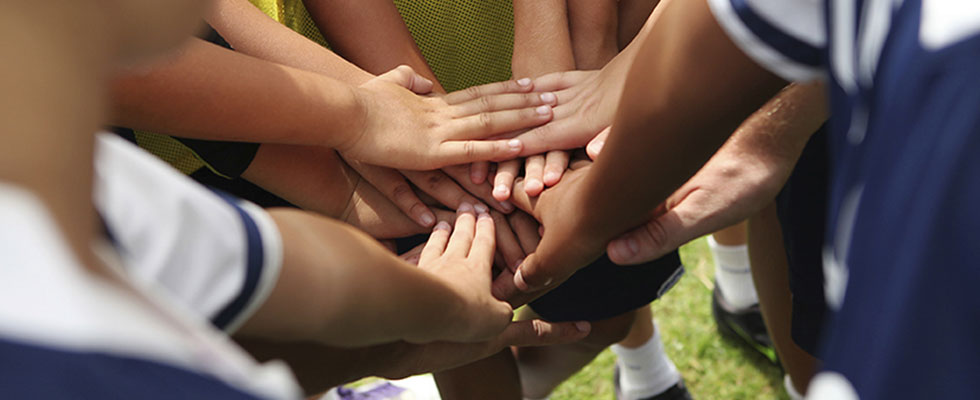Comments on the U.S. Department of Health and Human Services Draft National Youth Sports StrategySubmitted by YSCN on July 22, 2019The definition of sports-based youth development (SBYD) reprinted below is from the draft National Youth Sports Strategy (NYSS) published in July - for a copy contact [email protected]. Following this definition is YSCN’s comments on the draft’s coverage of SBYD followed by proposed action to advance SBYD in the U.S. NYSS Definition of Sports-Based Youth Development Programs Sports-based youth development programs provide a holistic approach, using sports as a mechanism to engage youth and promote positive youth development. While sports-based youth development programs may provide youth with a substantial amount of physical activity, sports skills development is secondary to helping youth develop life skills and experiences. These programs often create opportunities for youth to connect to others, develop a variety of skills, and use those skills to contribute to their communities. When youth work collectively to achieve a common goal, they also practice problem solving and decision-making. Such opportunities build cognitive and social competencies that youth can apply to other areas of their lives. Sports-based youth development programs share three common components:
YSCN Response The SBYD description provided by the draft National Youth Sports Strategy (NYSS) is a useful generic explanation to distinguish from the American Development Model (ADM) developed by the Olympic and Paralympic Committee. However, YSCN respectfully suggests an effective national youth sports strategy should include a more detailed description on the current state of SBYD programs, particularly in how children from under served communities are being helped. Most legislators, government agencies, foundations and the public are unaware of these innovative programs and how they are helping the most vulnerable children in our country to succeed in school and become productive citizens. The current Pay for Play youth sports environment in the U.S. leaves too many children on the sidelines. For the U.S. to realize a national youth sports strategy of Play for All, the SBYD model and the nonprofit programs that implement SBDY must have the same importance and support as the ADM. State of Sports-Based Youth Development – While the pay for play youth sports has become a $15 billion plus business over the past two decades, there has been a determined growth during this same period of underfunded 501c3 nonprofits throughout the U.S. dedicated to combating the lack of sports and fitness programs for low income children. Today, there are hundreds of sports-based youth development (SBYD) organizations providing low income children, often after school, a wide variety of sports (e.g. baseball/softball, basketball, ice skating, flag and touch football, lacrosse, skiing, and soccer) and fitness programs (e.g. hiking, yoga and Zumba). The goal of SBYD is to provide structured physical exercise that kids enjoy and likely will continue playing through high school and as an adult. Further, SBYD programs often include critical youth development programs such as academic enhancement to graduate from high school and for some earning college scholarships, employment training, civic engagement, health and nutrition guidance, or even trauma therapy. The youth in these programs realize over time measurable improvements in reduced weight, improved fitness, higher grades and increased school attendance. These SBYD nonprofits vary in size – from a single program of a dozen children to multiple U.S. program locations serving hundreds, and even thousands, of children. While you can find these nonprofit programs in most major metropolitan areas, they often have limited visibility and financial support. While many nonprofit SBYD programs exclusively involve low income children with no fees, there are also SBYD nonprofits that charge fees while waving fees for families unable to pay in order to support Play for All within their program. All SBYD nonprofits work hard to be financially self-sufficient through a range of fundraising sources including foundation and government grants, events, and individual donations. However, the funding is insufficient to include all of the underserved children who want to participate in these programs. For example, a 2018 national survey by the Laureus USA Foundation of SBYD nonprofits found that 53% of the surveyed organizations reported it was difficult to raise the necessary revenues needed to operate. Another national survey of SBYD nonprofits in 2017 by the Youth Sports Collaborative Network (YSCN) found that the top three challenges these organizations faced were all fundraising related, with obtaining new sources of funding (55%), number one. Further, 51% of YSCN survey respondents also stated that they relied on no fewer than 6, to as many as 9, different fundraising sources. Further verifying the nonprofits’ fundraising challenges is the Laureus result that 56% of the funding commitments for SBYD nonprofits were only for a single year. Accordingly, SBYD nonprofits need continued AmeriCorps support for funding trained coaches and operational staff. In addition, SBYD nonprofits rely on donated gently used and excess equipment and apparel. Further, access to affordable or free fields and facilities is essential, but unfortunately can be insufficient in numbers and of poor quality. SBYD nonprofits require more funds and resources to meet the demand and needs of the children in the communities they serve. While these programs are helping an estimated hundreds of thousands of children across the U.S., millions of children are in need of these programs. More funding, resources, and free/low cost access to quality fields and facilities are needed for these programs to ensure all children who want to play can play in the U.S. YSCN supports the NYSS in developing and promoting a strategy and policy to ensure all children have an opportunity to participate in organized sports and fitness activities. However, this opportunity will not be realized without more financial and resource support from all levels of government, foundations, corporations and the public. YSCN Recommendations 1) As it is supporting ADM, NYSS would be incomplete and ineffective without fully supporting the implementation of SBYD for youth sports for all children, especially through age 14 and for nonprofit programs serving low income children, to provide organized sports and fitness activities that are fun while also developing important health and life skills and experiences. 2) HHS should facilitate partnerships among academia, youth sports organizations and federal government agencies to develop research/surveys that measure the physical, social and academic impact of SBYD programs, especially those serving youth from underserved communities. 3) HHS should promote and encourage sporting goods companies and competitive youth sports organizations/clubs to donate gently used and excess equipment and apparel to SBYD nonprofits serving low income children within their communities. 4) Continue and expand the federal budget for the Corporation for National and Community Service (CNCS) and its AmeriCorps programs that provide much needed funding to train and pay coaches and operational staff for SBYD nonprofits in order that these nonprofits can allocate more of their budget to include additional children in their programs. 5) Support NYSS recommendation for shared-use agreements with public schools and parks and recreation facilities and fields, but urge increasing the number of quality fields and facilities, especially for SBYD nonprofits serving youth in under served communities. 6) HHS encourage the US Olympic and Paralympic Committee to fulfill its Amateur Sports Act purpose of “supporting nationwide sports participation “ by partnering with the major professional sport leagues and the professional players associations to cooperatively organize youth multi-sports festivals throughout the U.S. in order to increase public awareness and financial support of youth sports community programs to achieve Play for All. 7) NYSS should discourage states from requiring any sports participation fees, but if such fees are implemented recommend that such fees should be waived at a minimum for all students receiving Federal school lunch. 8) NYSS should encourage states to allocate some of their gaming, including recently legalized sports betting, tax revenue towards SBYD after school programs in their undeserved communities. As Chapter 7 – Youth Sports Around the World notes, such government funding is being provided in Norway and the United Kingdom on a national basis. With gaming being regulated and managed by states, states currently collect gaming tax revenues and are thus able to allocate this revenue as each determines appropriate. Many states apply these gaming tax revenues to public education. The President’s Council of Economic Advisors concluded in their 2018 report “playing sports allows youth to experience the connection between effort and success, and it enhances their academic, economic, and social prospects,” reason enough for states to fund after-school SBYD programs by tax revenue from legal gaming in their state. |


